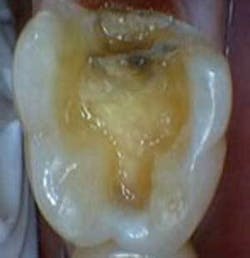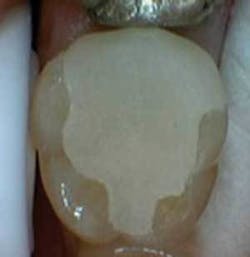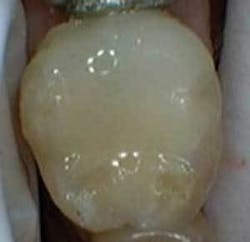Incorporating CAD Technology: How CEREC Changed My Practice
It is true, I was a reluctant CEREC user. When my husband, Dave, suggested in fall 2000 that we investigate the CEREC 3 for our practice, I had little interest. At the time, I was a part-time practitioner, and we had 4-year-old and 2-year-old girls who needed attention at home. I did not see how I was going to find time to learn, implement, and pay for this emerging technology. As I sit here today, I can say that purchasing our CEREC unit and the subsequent implementation of CEREC 3D has changed my thinking and the face of our practice.
My husband and dental business partner researches technology in our practice, and I am the numbers person. I needed to see that this equipment would benefit our patients and our profits. Doctors who come to our education center for training and people who know me have learned that three questions must be satisfied before I consider a major equipment purchase or system change in my office.
✓ Is it better for the patient?
✓Is it better for the doctors?
✓ Is it profitable?
A negative answer to any of these questions automatically makes the purchase questionable. CEREC garnered a “yes” to all three questions. Wondering if it would be cold or warm and inviting, I jumped right into the waters of dental technology.
Is it better for the patient?
Almost six years later, patients still call the office and say that the CEREC restorations we placed are the best things that we have ever put in their mouths. We generally receive phone calls within one week of placing restorations, and the calls more commonly come from men rather than women - a phenomenon that never occurred before CEREC technology. Clinically, the statistics in our office are impressive.
As noted in Fig. 1, the amalgam in tooth No. 19 required replacement because of marginal failure. After preparation (see Fig. 2), an image was obtained, a restoration was designed, and the CEREC restoration was seated and checked for marginal integrity (see Fig 3). Following polishing, the final restoration was seated using Variolink (see Fig. 4). Note the chameleon effect of the CEREC restoration.
null
null
null
null
Is it better for the doctors?
You already know that I am going to say yes, but let me tell you why. When we started looking at this equipment, we wanted to make a change in the office. We were getting bored with dentistry. Many of our friends wonder how two dentists who practice together, are married to one another, and have kids could possibly get bored, but we were. We had been practicing a combined 33 years and we wanted to increase revenue and bring our dentistry in line with the advancing technologies we had heard about for many years. For any business, including dentistry, to climb you can vary only a few elements:
✓ Increase the number of patients.
✓ Increase fees.
✓ Change menu of services provided.
✓ Increase available hours.
✓ Add another doctor or hygienist.
It was easy for us to decide when looking from a strict business model. We had no desire to change our hours; Dave was working 36 and I was working 20 hours a week - no change was needed or wanted. Also, we neither needed nor wanted a third doctor at that point. We adjust our fees annually and had just completed a fee restructuring in July 2000. That left changing our menu of services, which we hoped would drive more new patients into the office with proper advertising. We have gotten from 25 to 62 new patients a month during the past seven years, but we needed more to fuel our expansion.
In restaurant terms, we previously offered high-class chicken dishes. Now we offer filet mignon and lobster - highly desirable meals that everyone wants. CEREC 3D allowed us to change our menu of services and gain greater revenue for those higher-level procedures. With word spreading of our new technology and appropriate advertising, more new patients began coming through our door. It all translated to more dollars and better profitability.
Prior to owning our CEREC, we did no inlays or onlays. We sent all of our porcelain crowns to a lab at the cost of $110 to $250 per unit. If you convert even a few $150 to $200 composite resins to $650 to $750 inlays or onlays, revenue will increase. Doing just a few a month paid for our CEREC lease, and we had not even begun to calculate the savings we would realize from not sending a large percentage of our crowns to a lab. We had some learning to do with this new equipment, but we were no longer bored. We were jazzed.
Is it profitable?
This technology is enormously profitable. Besides the previously discussed savings, you have additional savings in not needing to take new impressions or make temps, no second numb-ups, and not setting up rooms for insertions. Patients appreciate that it’s start to finish in the same day. And when you get comfortable with the system, you can schedule a simple operative, such as two occlusal restorations, to be done while restorations are milling. You will also be able to schedule extra dentistry in the time slots you would have clogged up with crown, inlay, and onlay insertions if you had done a lab procedure.
Conclusion
This technology changed our practice. We also own an Ivoclar Vivadent diode laser, Schick digital radiology, a DEKA CO2 laser, DIFOTI, DIAGNOdent, and many other technologically advanced items. Patients expect a high quality of care at our office. They expect the best, and my staff and I deliver the best. If you are considering jumping into technology but are reluctant, don’t be. Come on in! The water is just fine.
Lorri A. Burt, DMD
Dr. Burt graduated from Temple University School of Dental Hygiene and Temple University School of Dentistry. She is a partner at Castle Dental, P.C. and is co-director of the Lehigh Valley Dental Education Center, both in Center Valley, Penn. She teaches technology integration to new users across the country. Reach her at [email protected].






